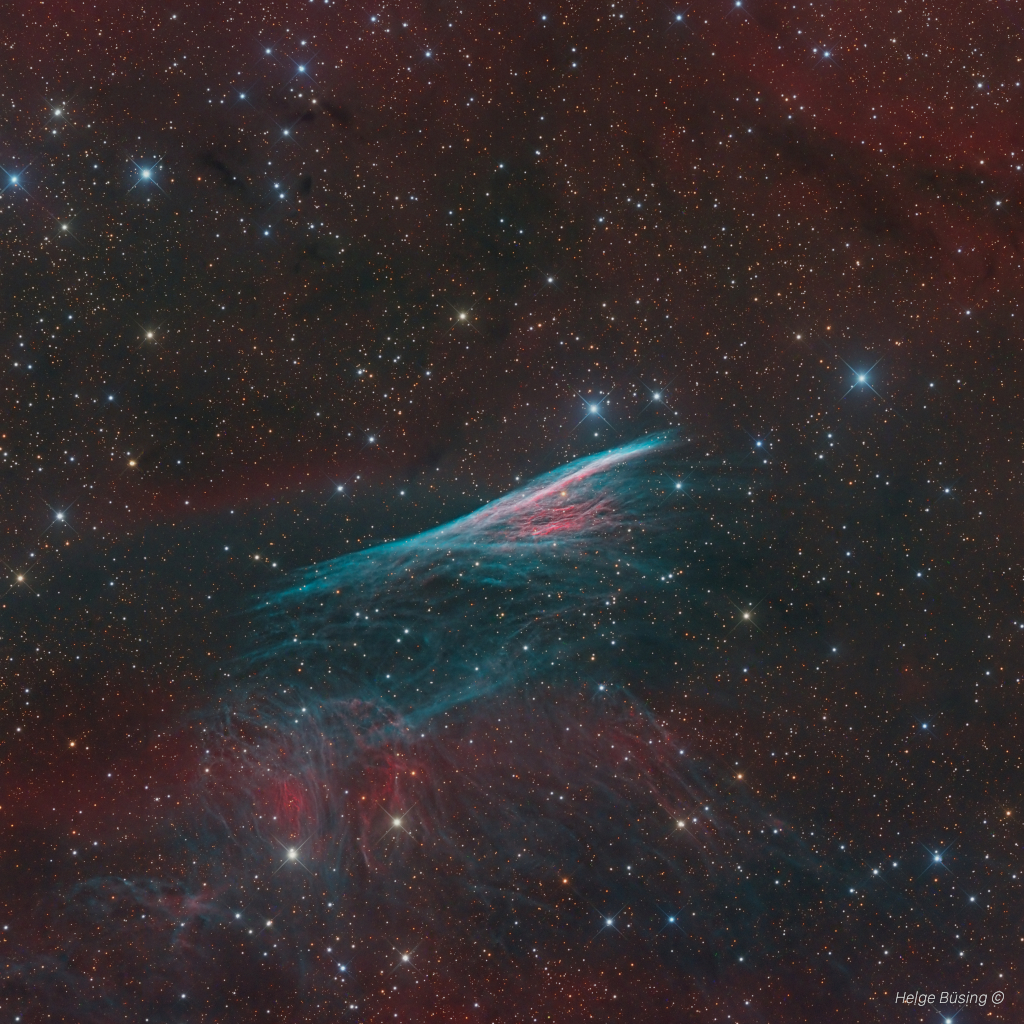2024年2月23日
The Pencil Nebula Supernova Shock Wave
Image Credit & Copyright: Helge Buesing
Explanation: This supernova shock wave plows through interstellar space at over 500,000 kilometers per hour. Centered and moving upward in the sharply detailed color composite its thin, bright, braided filaments are actually long ripples in a cosmic sheet of glowing gas seen almost edge-on. Discovered in the 1840s by Sir John Herschel, the narrow-looking nebula is sometimes known as Herschel’s Ray. Cataloged as NGC 2736, its pointed appearance suggests its modern popular name, the Pencil Nebula. The Pencil Nebula is about 800 light-years away. Nearly 5 light-years long it represents only a small part of the Vela supernova remnant though. The enormous Vela remnant itself is around 100 light-years in diameter, the expanding debris cloud of a star that was seen to explode about 11,000 years ago. Initially, the section of the shock wave seen as the Pencil nebula was moving at millions of kilometers per hour but has slowed considerably, sweeping up surrounding interstellar material.
Tomorrow’s picture: light-weekend
铅笔星云与超新星爆震波
影像提供与版权: Helge Buesing
说明: 这道超新星爆震波,以每小时超过500,000公里的速度穿过星际空间。在这幅美丽细致的彩色组合影像的中心附近,向上移动的纤细明亮辫状波纹,其实是几乎侧向的层状宇宙辉光云气上头的涟漪。这团拥有纤细外观的星云,是在18世纪40年代由约翰·赫歇尔所发现的,因此偶有赫歇尔光束之称。此外,这团编录号为NGC 2736的星云,因其细长尖头的外貌,在近代为它博得铅笔星云的雅号。离我们约800光年远的铅笔星云,长约5光年左右,是船帆座超新星遗迹的一小部份。庞大的船帆座超新星遗迹本身的直径则在100光年左右,是人类在11,000年前见过的恒星爆炸,所留下的扩张恒星碎片云。在最起初,爆炸震波的速度高达每小时数百万公里,但随着它扫集周遭的星际云气,速度已大幅降低。
明日的图片: light-weekend




Pingback: M106方向的景观 – NASA中文